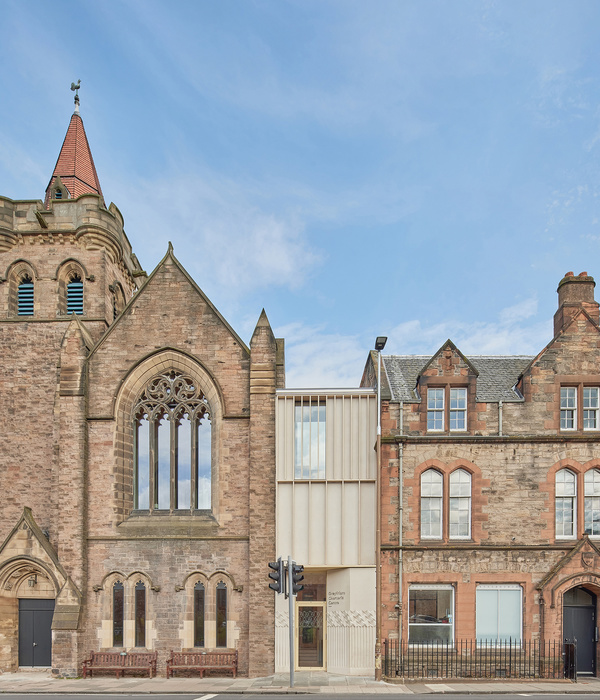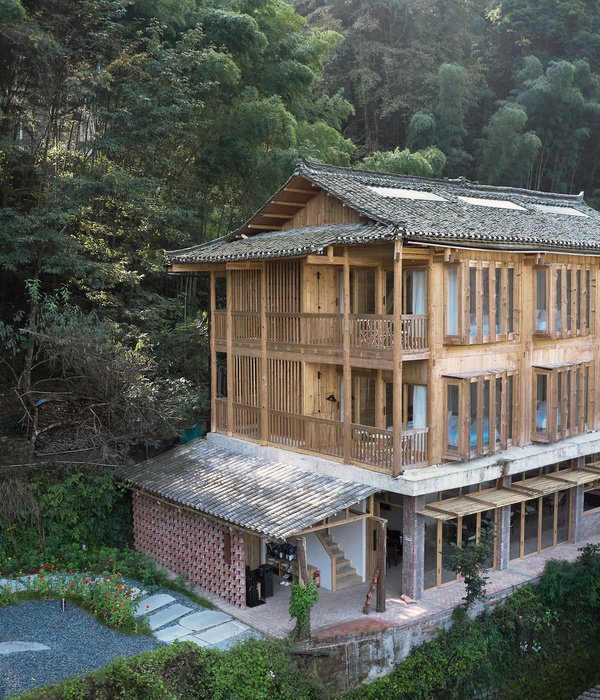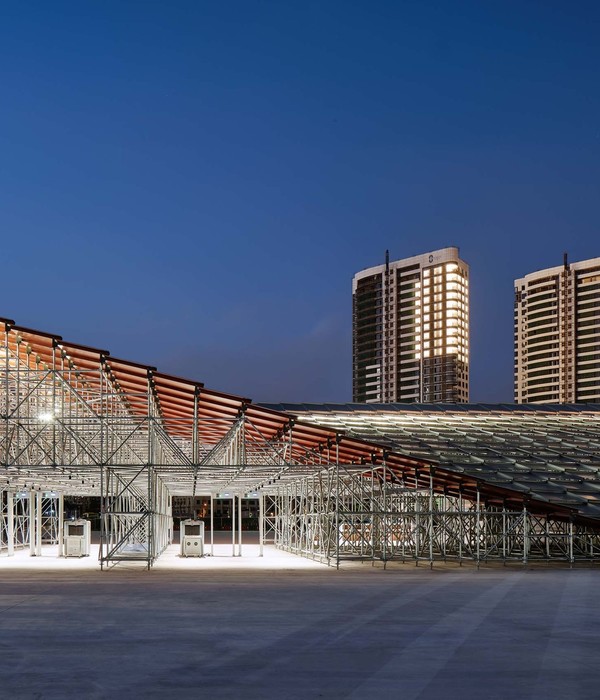India mahaprasthanam Teach Crematorium and Cemetery
设计方:DA studios
位置:印度
分类:公共设施
内容:实景照片
图片:12张
这是由DA studios设计的mahaprasthanam印度教火葬场&公墓升级项目。建筑师受凤凰基金会的委托,对印度一个疏于照管的目的和火葬场进行现代化升级。场地内需建设基础设施以适应印度教文化和场地仪式。在印度教经典哲学中,生命的目的是要实现shodasha samskara的16个阶段。最后阶段是moksha,即解脱,个人修行达到了完美状态,从轮回中得到解脱。antyeșṭi,生命的最后阶段,葬礼上分为五个连续的部分:准备、火葬、哀悼、净化和纪念。该项目根据这个流程,布置了一系列的结构,以哀悼和祝福。每个结构都象征着爱和失去的意义,并重申死亡是生命延续中自然的、不可避免的结果。来自印度教经典经文的摘要投射到整个场地的墙壁上。两种建筑类型出现在场地中:展馆和火葬用的柴堆。前者是封闭的,以安抚和控制亲友的情绪,后者是对着天空开放的,以释放最后告别的情绪。该项目使用了一个多月的时间施工才完成。
译者:筑龙网艾比
design architecture studios, under commission from the phoenix foundation, modernized a neglected cemetery and crematorium in india. the 3.7 site was approached with the intent to build infrastructure to accommodate hindu rituals both culturally and contextually. in the philosophy of gita, life’s purpose is fulfilled in a 16 phase process called shodasha samskara. the final stage is moksha, in which the individual reaches a state of karmic perfection, and is released from the cycle of life.
antyeșṭi, the final stage of life, is the funeral which is subdivided into five sequential parts: preparation, cremation, mourning, purification, and commemoration. ‘mahaprasthanam’, follows this order in a series of structures that both mourn and celebrate the individual. each symbolizes the significance of love and of loss, and reiterates the fact that death is a natural, unavoidable consequence of the continuity of life.
extracts from the bhagat gita (hindu scripture) are cast onto walls throughout the entirety of the site. two structure types can be found within, pavilions and pyres; the first of which are enclosed to comfort and console loved ones, the latter which open skywards to liberate the lost in a final farewell. ‘mahaprasthanam’ was completed over a single month of construction.
印度mahaprasthanam教火葬场和公墓实景图
印度mahaprasthanam教火葬场和公墓平面和立面
{{item.text_origin}}












